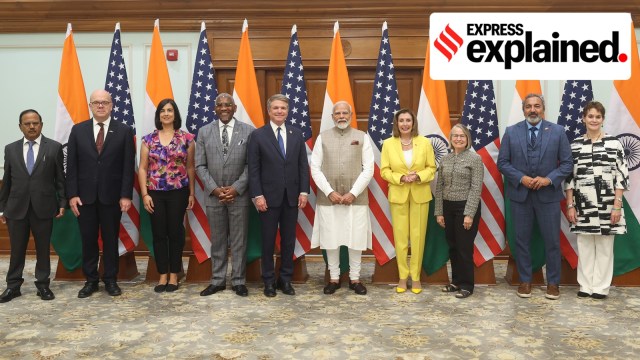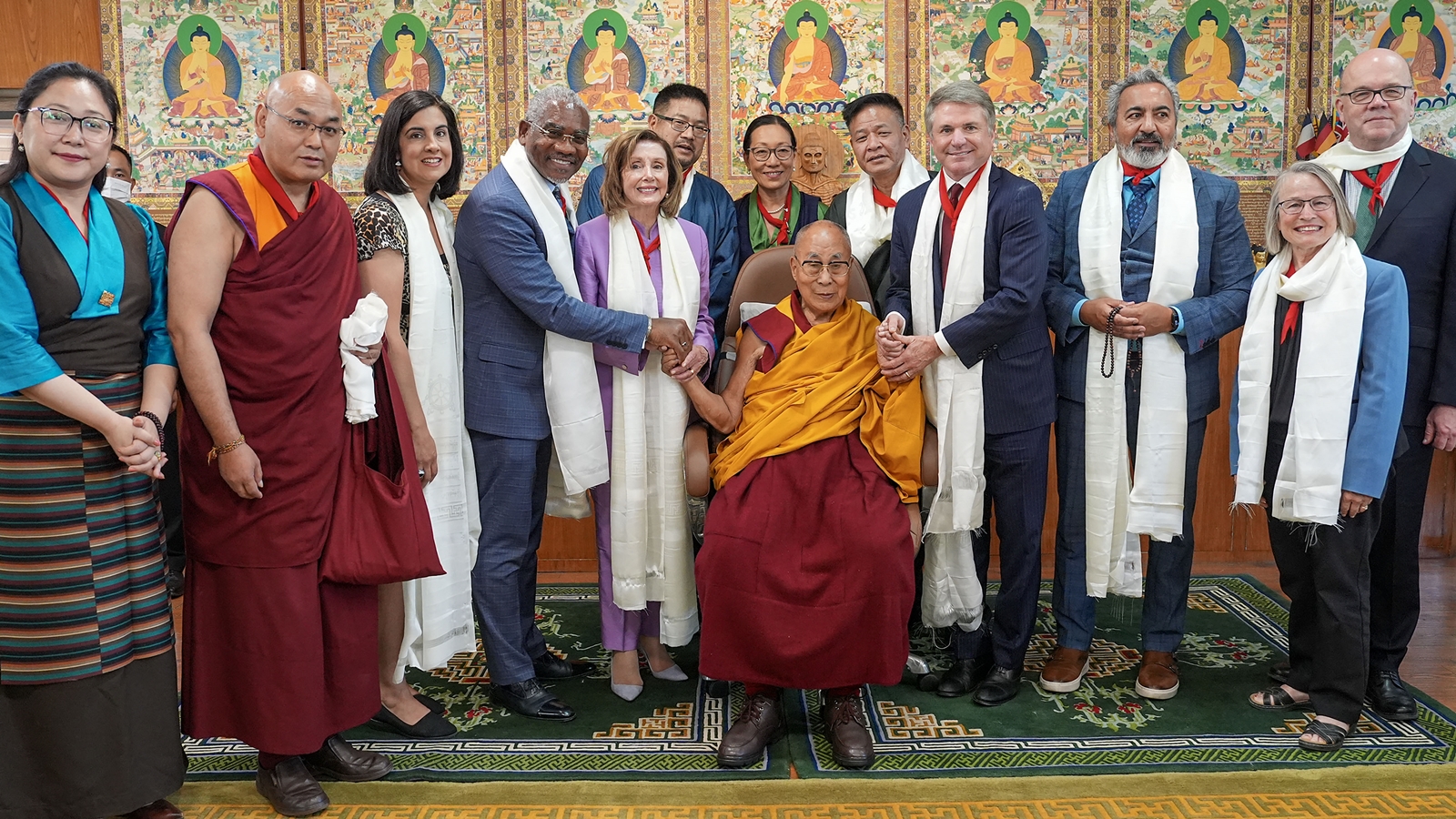The Prime Minister is likely to be in the same place at the same time as China’s President Xi Jinping during the leaders’ summit of the Shanghai Cooperation Organisation (SCO) in Astana, the capital of Kazakhstan, on July 3-4. It remains to be seen if a meeting takes place between the two leaders, and whether it leads to a breakthrough.

Developments over the past few weeks provide some context for the Astana summit.
Two interviews and hope
IN APRIL, Prime Minister Modi told Newsweek magazine during an interview: “For India, the relationship with China is important and significant. It is my belief that we need to urgently address the prolonged situation on our borders so that the abnormality in our bilateral interactions can be put behind us.”
“Stable and peaceful relations between India and China are important for not just our two countries but the entire region and world,” Modi said. “I hope and believe that through positive and constructive bilateral engagement at the diplomatic and military levels, we will be able to restore and sustain peace and tranquility on our borders.”
China reacted positively to the Prime Minister’s framing of the border dispute.
The Chinese foreign ministry spokesperson said the relationship between India and China was “about more than the boundary situation”. The two countries “maintain close communication through diplomatic and military channels on handling issues related to the border situation and have made positive progress”, she said.
Story continues below this ad
“We hope that India will work with China, approach the bilateral relations from a strategic height and long-term perspective, keep building trust and engaging in dialogue and cooperation, and seek to handle differences appropriately to put the relationship on a sound and stable track,” the spokesperson said.
IN MAY, External Affairs Minister S Jaishankar expressed hope for resolving the remaining issues with China amid the border standoff in Ladakh. These outstanding issues primarily revolved around “patrolling rights” and “patrolling abilities”, Jaishankar said in an interview to PTI.
 The Dalai Lama with former US House of Representatives Speaker Nancy Pelosi and other members of the US Congressional delegation at his residence, in Dharamshala. (PTI)
The Dalai Lama with former US House of Representatives Speaker Nancy Pelosi and other members of the US Congressional delegation at his residence, in Dharamshala. (PTI)
Asked about the likely timeline for resolving these issues, particularly in the light of Modi’s remarks to Newsweek, Jaishankar said the Prime Minister had provided a “big picture” perspective.
Limiting the dispute to “patrolling rights” and “patrolling abilities” was seen as a nuancing of the Indian position, pivoting away from the earlier stance of “disengagement” and “de-escalation”.
Taiwan, Tibet, and leverage
Story continues below this ad
While these instances built hope for a resolution after the Lok Sabha election, other developments spotlighted persisting complications.
FIRST, an exchange of messages between the Prime Minister and Taiwan’s President Lai Ching-te on the social media platform X — which sources said was the first public interaction between the two leaders — angered the Chinese, who saw this as a provocation.
On June 5, the President, also known as William Lai, congratulated Modi on returning to power, and said he looked forward to “enhancing the fast-growing Taiwan-India partnership” and “expanding collaboration on trade, technology and other sectors to contribute to peace & prosperity in the Indo-Pacific”. Modi thanked Lai and expressed hope for closer ties and a mutually beneficial economic and technological partnership.
China protested “all forms of official interactions between the Taiwan authorities and countries having diplomatic relations with China”, and asked India not to deviate from its commitment to the ‘One China’ policy.
Story continues below this ad
India and Taiwan do not have formal diplomatic ties, and have instead focused on commerce, culture, and education. The profile of the relationship, now in its third decade, has been deliberately kept low owing to Chinese sensitivities.
SECOND, a seven-member bipartisan delegation of the United States Congress met the Dalai Lama in Dharamsala on Wednesday, where former House Speaker Nancy Pelosi declared that while the Tibetan spiritual leader’s “legacy will live forever”, Xi will “be gone and nobody will give [him] credit for anything”.
A day later, on Thursday, the delegation called on Prime Minister Narendra Modi, External Affairs Minister S Jaishankar, and National Security Advisor Ajit Doval.
The Chinese reacted sharply, and “urged” the US to “adhere to its commitments of recognizing Xizang as part of China and not supporting “Xizang independence”. China refers to Tibet as Xizang.
Story continues below this ad
Pelosi had ignored warnings from Beijing to visit Taiwan in August 2022. On June 12, the House of Representatives passed the bipartisan Promoting a Resolution to the Tibet-China Dispute Act, which had already cleared the Senate.
The upshot and the outlook
How should these developments be read?
Some analysts believe that while India has clearly shown its intent on resolving the border situation through the interviews given by the PM and Jaishankar, it has also sent out a signal through Pelosi’s visit to the Dalai Lama ahead of a possible meeting between Modi and Xi in Astana.
Some others believe that while New Delhi had initially wanted to resolve the border situation after the Lok Sabha election, it changed its mind after the NDA got a weaker-than-expected mandate — with the government wary of criticism that any reconciliation that was not on India’s terms might draw.
Stable borders are key for the government to focus on its agenda for economic growth, especially after the election results have shown that the BJP suffered due to the lack of jobs and rise in prices. The ongoing engagement between Australia and China offers insight that is relevant to India as well.
Story continues below this ad
Australia-China ties suffered a setback under the Centre-right governments of Malcolm Turnbull and Scott Morrison. The change in government muted the high-decibel rhetoric from leaders on the right, and the Centre-left Prime Minister Anthony Albanese is seen to be engaging with China’s leadership at the highest level, while not compromising on Australia’s core interests.
On the first visit by a Chinese Premier to Australia in seven years last week, Li Qiang said he had held “candid, in-depth and fruitful” talks with Albanese, and the two countries had agreed to manage their differences and disagreements properly.
The last two meetings between Modi and Xi — on the sidelines of the G20 leaders meeting in Bali in November 2022 and on the margins of the BRICS summit in South Africa in August 2023 — did not produce positive outcomes. Bilateral ties remain hostage to the border dispute, and there has been hardly any political movement. Economic ties have sustained — bilateral trade touched a record $ 136 billion in 2023 — but a heightened awareness of the security threat perception from China has led to a serious effort at decoupling by the Indian establishment.
The Australian model holds possibilities, but several things, including Xi’s personal political will, must fall in place.



 The Dalai Lama with former US House of Representatives Speaker Nancy Pelosi and other members of the US Congressional delegation at his residence, in Dharamshala. (PTI)
The Dalai Lama with former US House of Representatives Speaker Nancy Pelosi and other members of the US Congressional delegation at his residence, in Dharamshala. (PTI)




































